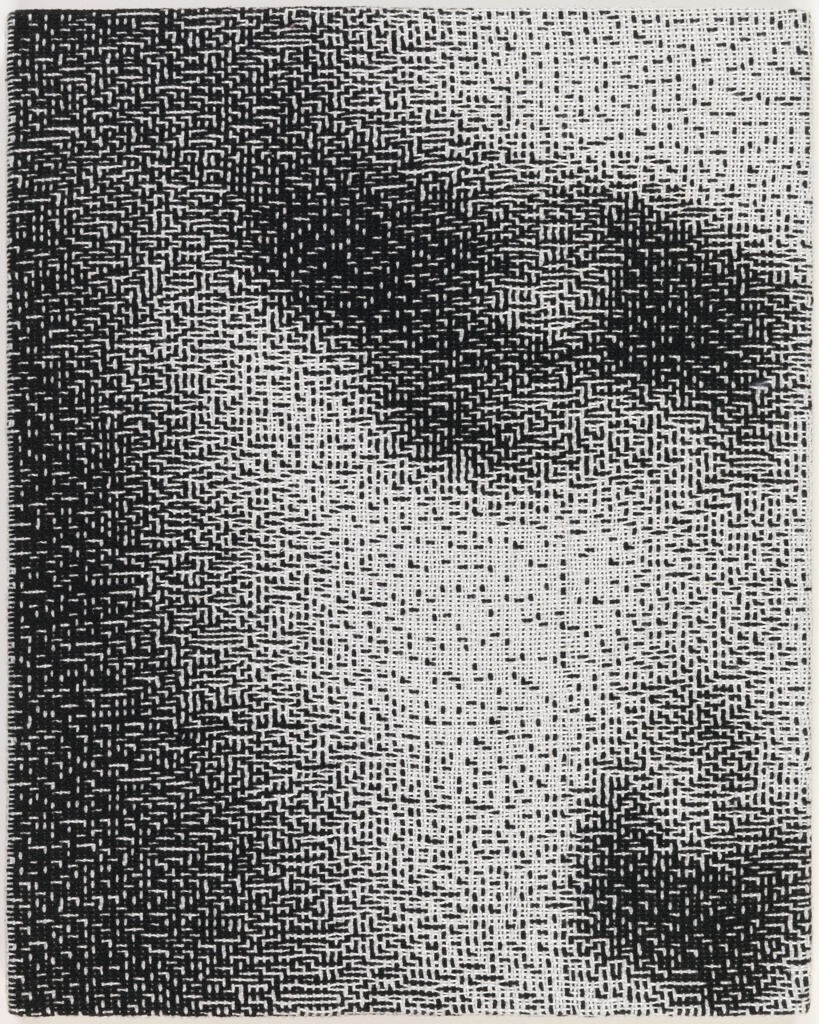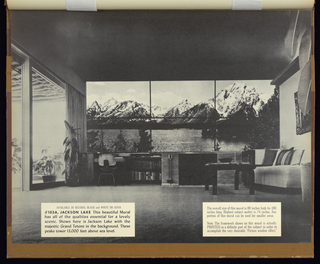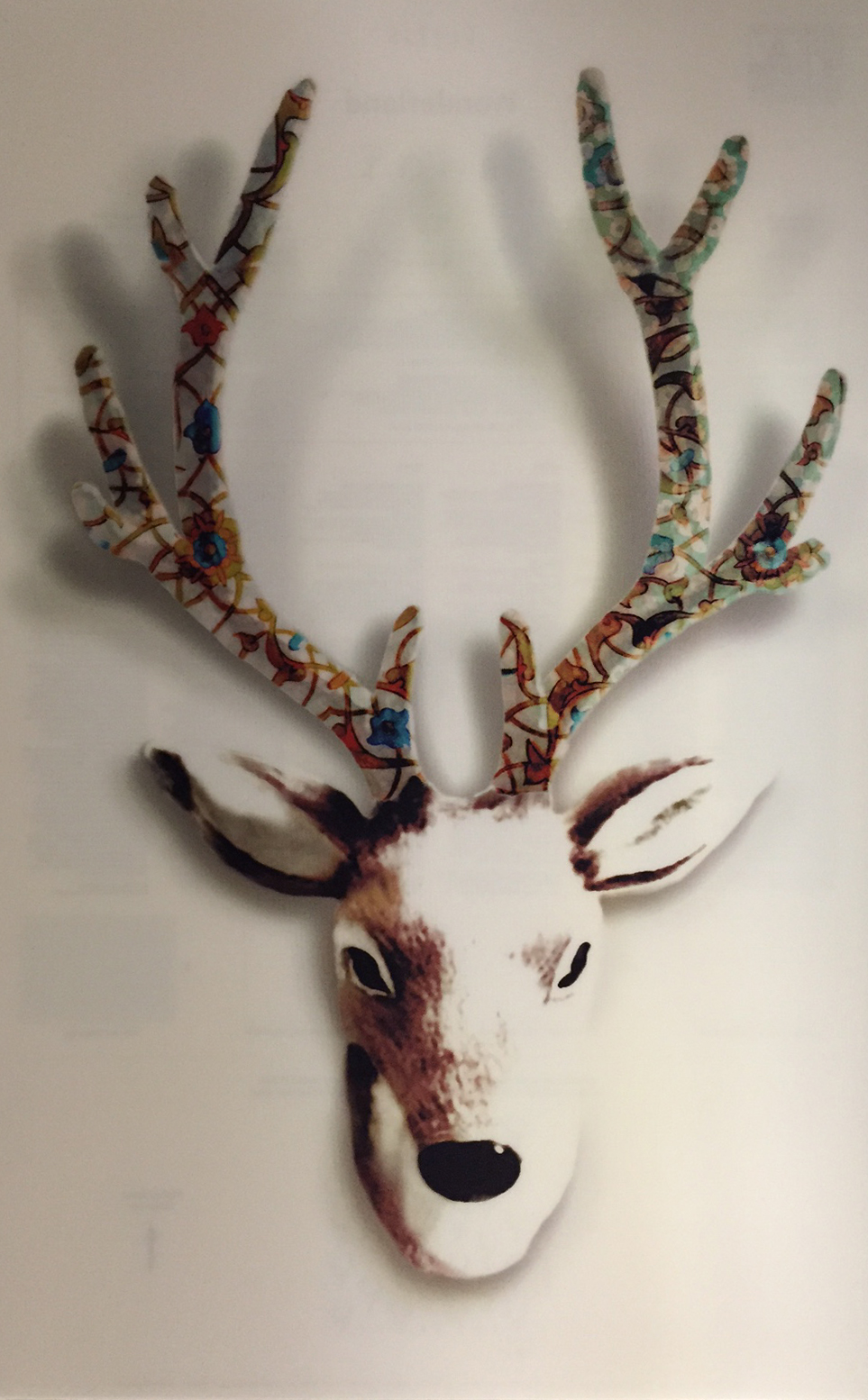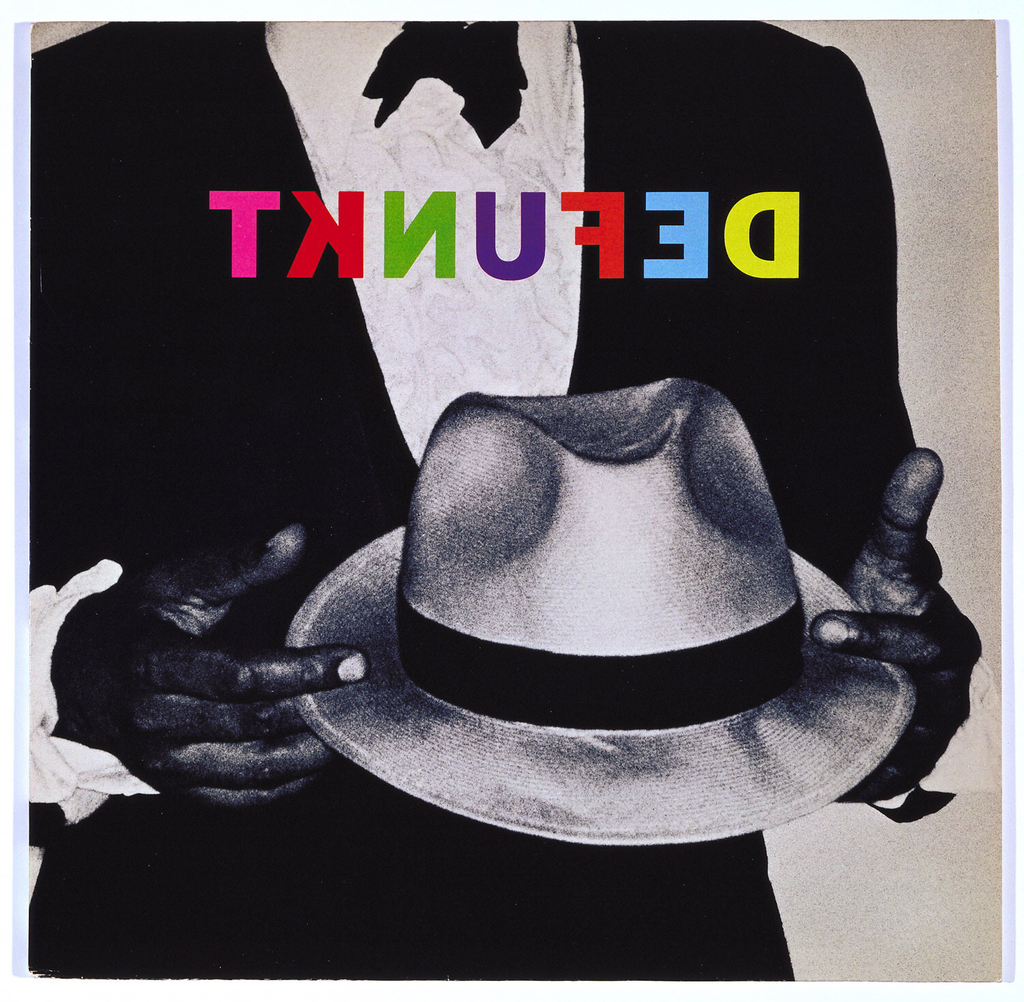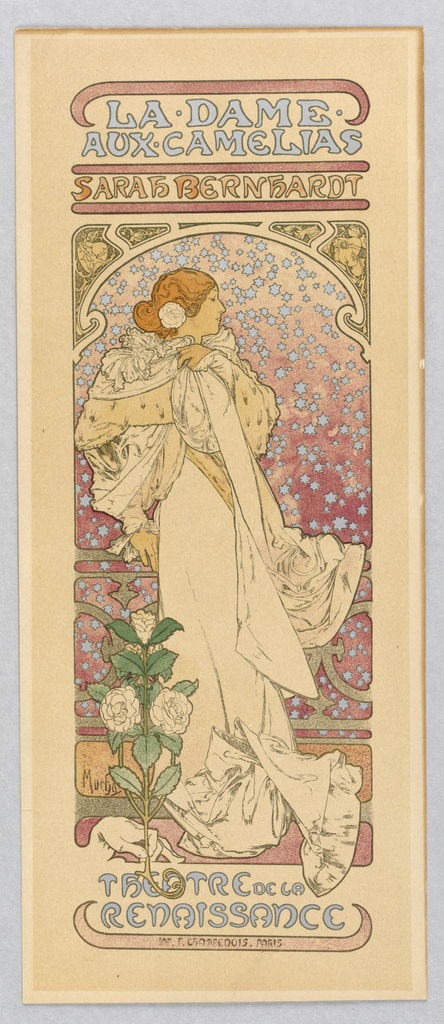In celebration of Women’s History Month, March Object of the Day posts highlight women designers in the collection. Lia Cook’s creative process combines photographic media and computer-aided technologies with a mastery of hand and powered Jacquard looms. Her black-and-white work is based on scanned photographs, which are manipulated on a computer. Digital technology enables her...
This photomural of Jackson Lake is one of three such murals introduced by Foto Murals of California in 1948. Each mural was available in a black and white, or sepia version, and measured approximately 90×180 inches. Each photo was captured by a world renowned landscape photographer, and because of a special process developed by Foto...
Wallpaper offers artists and designers an opportunity to translate their designs within a domestic environment. The Rudolf (ca. 2015) wallcovering manufactured by Élitis is the first lenticular print produced for the interior. Lenticular printing is the process of multiple pictures intertwined into one image that produces a three-dimensional effect and creates a new medium for...
A man in a tuxedo holds a white fedora hat in this Defunkt album cover designed by Tibor Kalman. As in some of his other album designs, Kalman chose to alter the band’s name through reverse lettering. Printed in multicolor, the text is especially striking printed atop the black and white photograph. When reflecting on...
The Belle Époque was an explosion of optimism and cultural innovation and artistic endeavours. The Belle Époque, lasting from the 1870s up to WWI, was at its height in Paris during the 1890s and 1900s. It was a great time for art and theatre, and they converged to great success at the Theatre de la...
Before any mannequin dressing begins, proper museum protocol regarding the intake of objects must be followed. The process generally goes like this: First, the boxes or crates are opened in a clean and secure gallery or room that has environmental controls (including a specific relative humidity and temperature). The entire uncrating process is always photographed,...
Exhibitions are hard work. At Cooper-Hewitt they are planned years in advance and involve several departments cooperating towards a common goal of creating the best exhibition possible. Once the research is completed, the objects chosen, the didactic panels and brochure text written, and the exhibition design layout completed, there is still one very important step...
